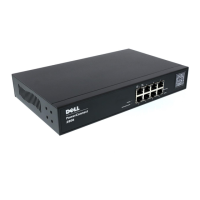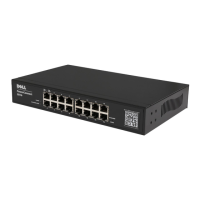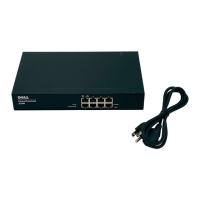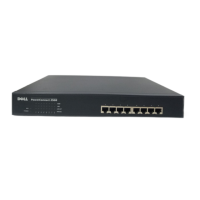171
CLI
Command Line Interface
. A set of line commands
used to configure the system.
Communities
Specifies a group of users which retains the same
system access rights.
CPU
Central Processing Unit
. The part of a computer
that processes information. CPUs are composed of a
control unit and an ALU.
D
DHCP Client
An Internet host using DHCP to obtain
configuration parameters, such as a network
address.
DSCP
DiffServe Code Point (DSCP)
. DSCP provides a
method of tagging IP packets with QoS priority
information.
Domain
A group of computers and devices on a network that
are grouped with common rules and procedures.
Duplex Mode
Permits simultaneous transmissions and reception
of data. There are two different types of duplex
mode:
• Full Duplex Mode — Permits synchronous
communication. Two parties can transmit
information at the same time.
• Half Duplex Mode — Permits asynchronous
communication. Only one party can transmit
information at a time.
Dynamic VLAN Assignment (DVA)
Allows automatic assignment of users to VLANs
during the RADIUS server authentication. When a
user is authenticated by the RADIUS server, the user
is automatically joined to the VLAN configured on
the RADIUS server.
E
Egress Ports
Ports from which network traffic is transmitted.
End System
An end user device on a network.
Ethernet
Ethernet is standardized as per IEEE 802.3.
Ethernet is the most common implemented LAN
standard. Supports data transfer rates of Mpbs,
where 10, 100 or 1000 Mbps is supported.
EWS
Embedded Web Server
. Provides device
management via a standard web browser. Embedded
Web Servers are used in addition to or in place of a
CLI or NMS.
F
FFT
Fast Forward Table.
Provides information about
forwarding routes. If a packet arrives to a device with
a known route, the packet is forwarded via a route
listed in the FFT. If there is not a known route, the
CPU forwards the packet and updates the FFT.

